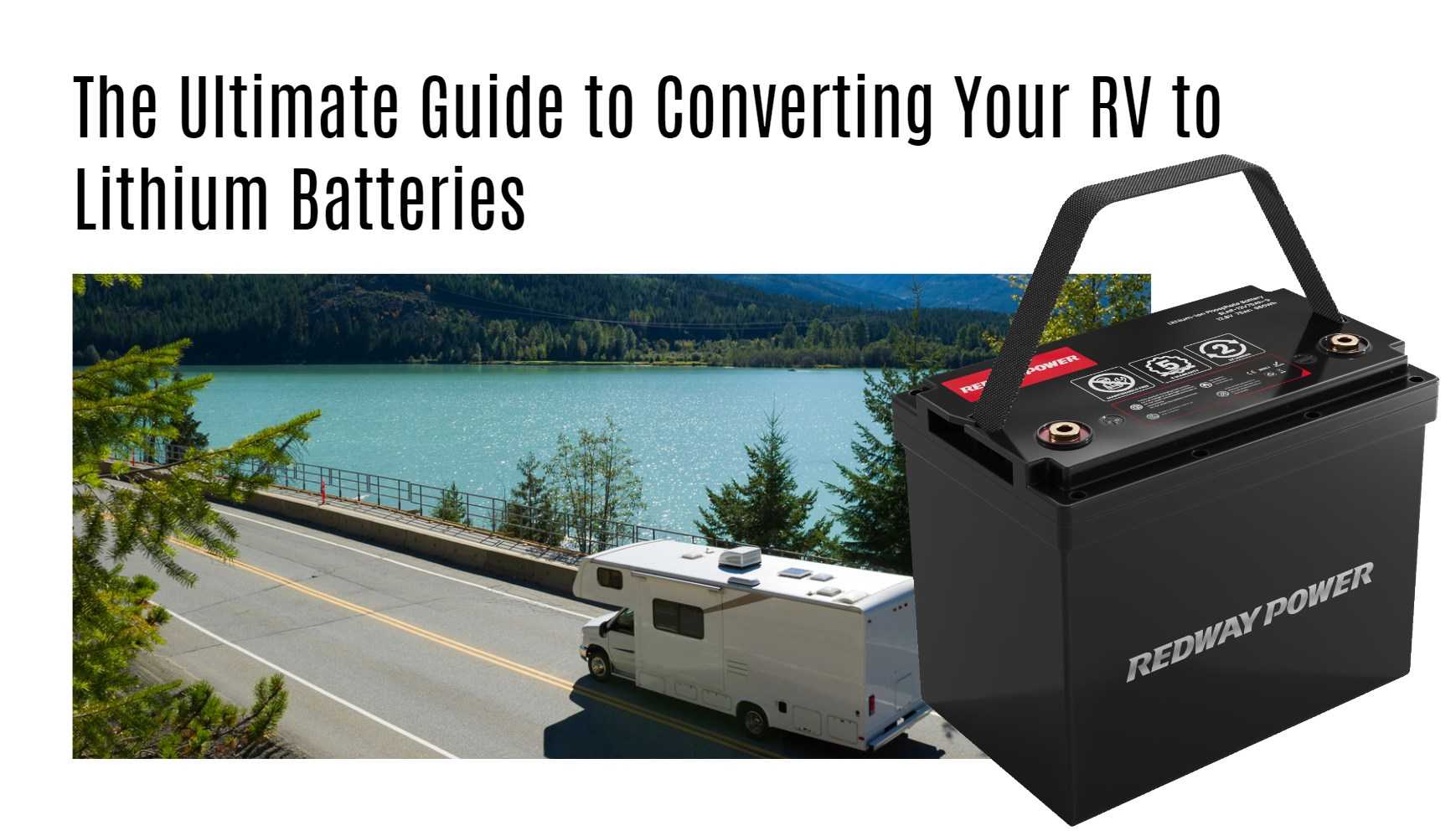Converting your RV to lithium batteries can significantly enhance your power system’s efficiency, longevity, and overall performance. By making this switch, you can enjoy longer-lasting power supplies that charge faster and require less maintenance than traditional lead-acid batteries.
What are the benefits of switching to lithium batteries in an RV?
Lithium batteries provide numerous advantages over lead-acid options, including extended lifespans (up to 10 years), higher energy density allowing for more power storage in less space, and faster charging capabilities that enable quicker replenishment of power reserves while on the road or at a campsite.Chart: Comparison of Battery Types
| Feature | Lead-Acid Batteries | Lithium Batteries |
|---|---|---|
| Lifespan | 3-5 years | 10+ years |
| Depth of Discharge | 50% | Up to 80% |
| Weight | Heavier | Lighter |
| Charging Speed | Slower | Faster |
How do you choose the right lithium batteries for your RV?
Selecting the appropriate lithium battery involves assessing your RV’s energy needs based on appliances used, desired runtime, and available space for installation. Ensure that the chosen battery fits within your existing setup while meeting voltage requirements.
Wholesale lithium golf cart batteries with 10-year life? Check here.
What safety precautions should be taken during installation?
Before beginning installation, wear protective gear such as gloves and safety glasses. Ensure adequate ventilation in the battery compartment to prevent overheating during operation. Securely mount the battery using appropriate trays or brackets to prevent movement while traveling.Chart: Safety Precautions Checklist
| Safety Measure | Description |
|---|---|
| Protective Gear | Gloves and safety glasses |
| Ventilation | Ensure airflow around battery |
| Secure Mounting | Use trays or brackets |
How do you properly wire and connect lithium batteries in an RV?
To wire your new lithium battery:
Want OEM lithium forklift batteries at wholesale prices? Check here.
- Disconnect power sources from existing systems.
- Install a battery isolation switch to prevent over-discharging.
- Connect positive terminals first, followed by negative terminals according to manufacturer instructions.
- Ensure all connections are tight to avoid voltage drops.
What is a Battery Management System, and why is it important?
A Battery Management System (BMS) monitors battery health by tracking parameters like voltage, temperature, and current flow. It ensures safe charging and discharging practices while preventing overcharging or overheating, which can lead to damage or safety hazards.
How do you test and maintain lithium batteries after installation?
Post-installation testing involves checking voltage output and charging capabilities regularly. Establish a maintenance schedule that includes cleaning terminals, inspecting connections for corrosion, and monitoring overall battery health to prolong lifespan.
What considerations should be made before converting to lithium batteries?
Before making the switch:
- Assess compatibility with existing chargers and converters.
- Consider initial costs versus long-term savings.
- Evaluate any necessary modifications required for successful integration into your RV’s electrical system.
How do lithium batteries compare to lead-acid batteries in terms of performance?
In terms of performance, lithium batteries outperform lead-acid counterparts with longer life cycles, greater depth of discharge capabilities, lighter weight, consistent voltage output during discharge cycles, and faster charging times—making them ideal for modern RV use.
What are the environmental impacts of lithium battery disposal?
Lithium batteries must be disposed of responsibly due to their chemical composition; improper disposal can lead to environmental contamination. Recycling programs exist that safely process these materials, so always check local regulations regarding disposal methods.
How do lithium batteries perform in extreme temperatures?
Lithium batteries generally perform well across a range of temperatures; however, extreme cold can reduce their efficiency temporarily while high temperatures can accelerate degradation processes. It’s advisable to store them within recommended temperature ranges when not in use.
Expert Views
“Switching from lead-acid to lithium batteries transforms your RV experience by enhancing efficiency while reducing weight—a crucial factor when traveling on diverse terrains. However, proper installation practices cannot be overstated; they ensure safety and longevity.”
FAQ Section
- Can I install lithium batteries myself?
Yes, but ensure you follow all safety guidelines and consult professionals if unsure about any steps. - How much does it cost to convert my RV to lithium?
Costs vary based on battery type and capacity but expect an initial investment that pays off over time due to longevity. - Will my existing charger work with new lithium batteries?
You may need a compatible charger designed specifically for lithium technology; check specifications before proceeding with installation.







